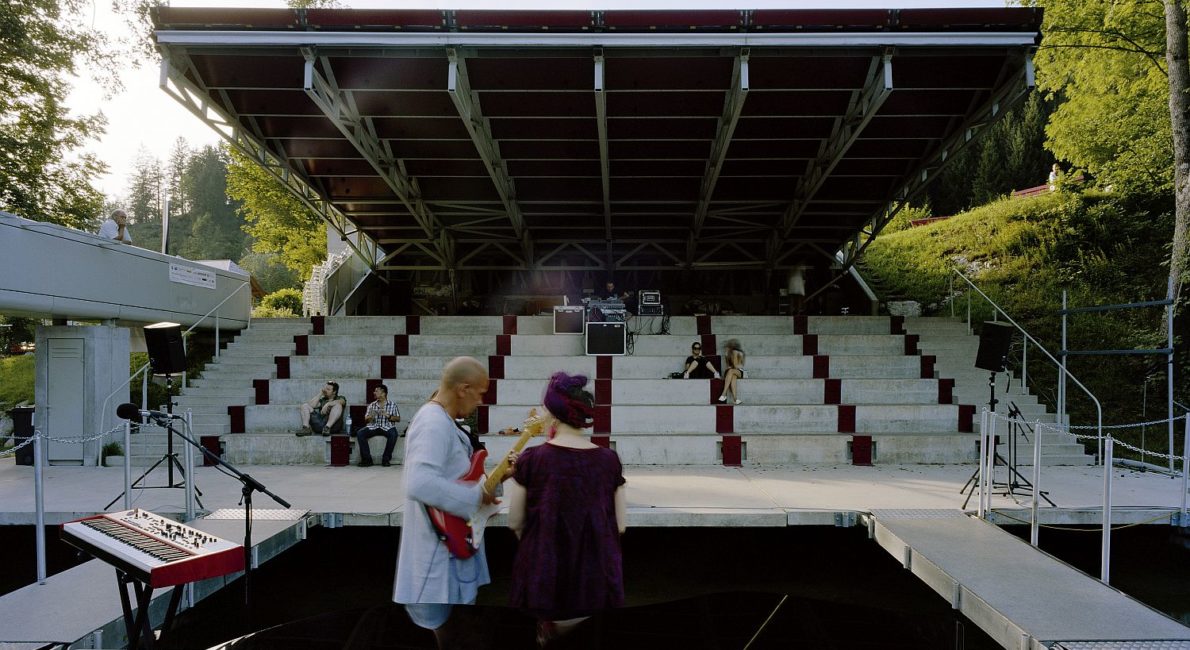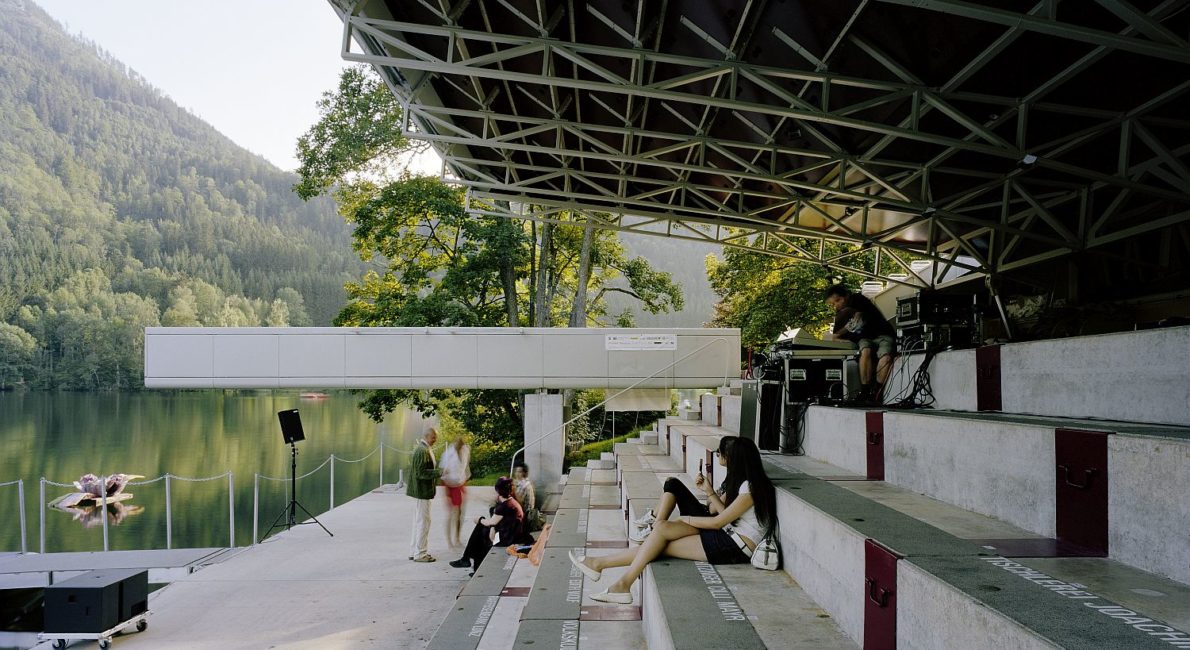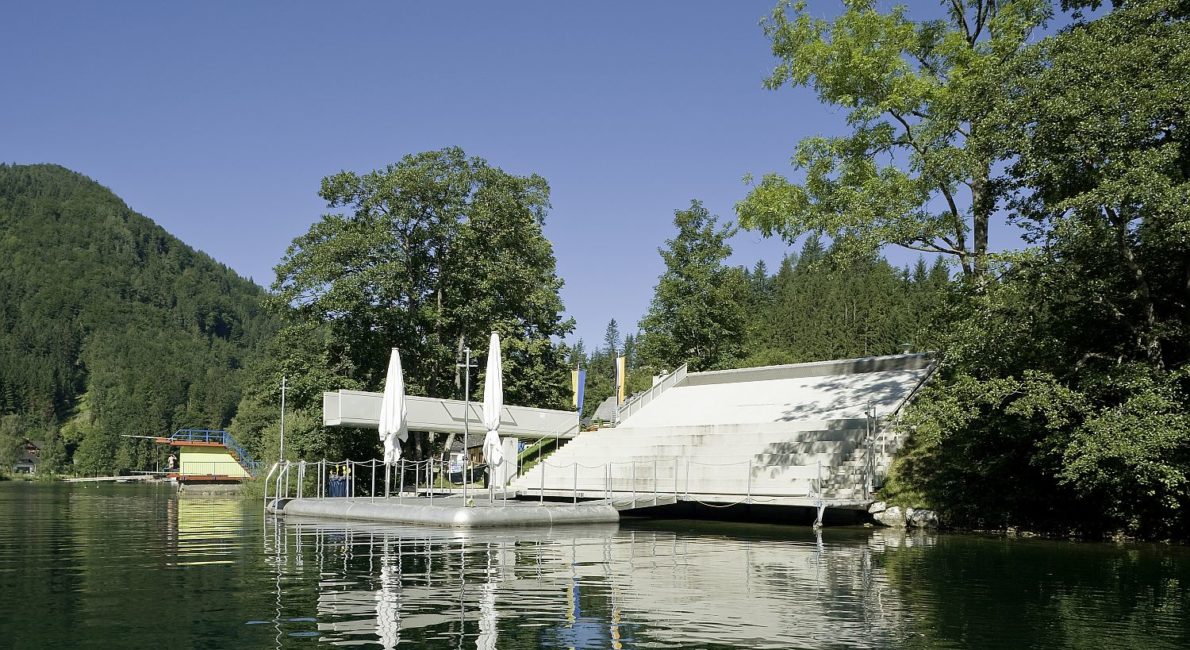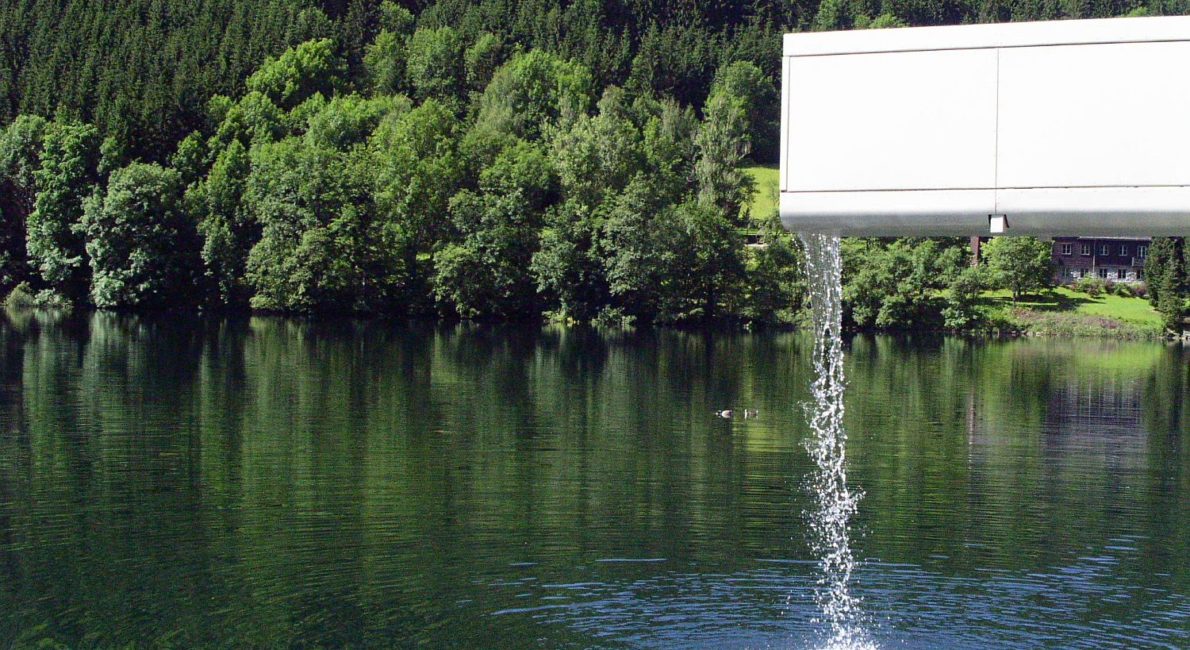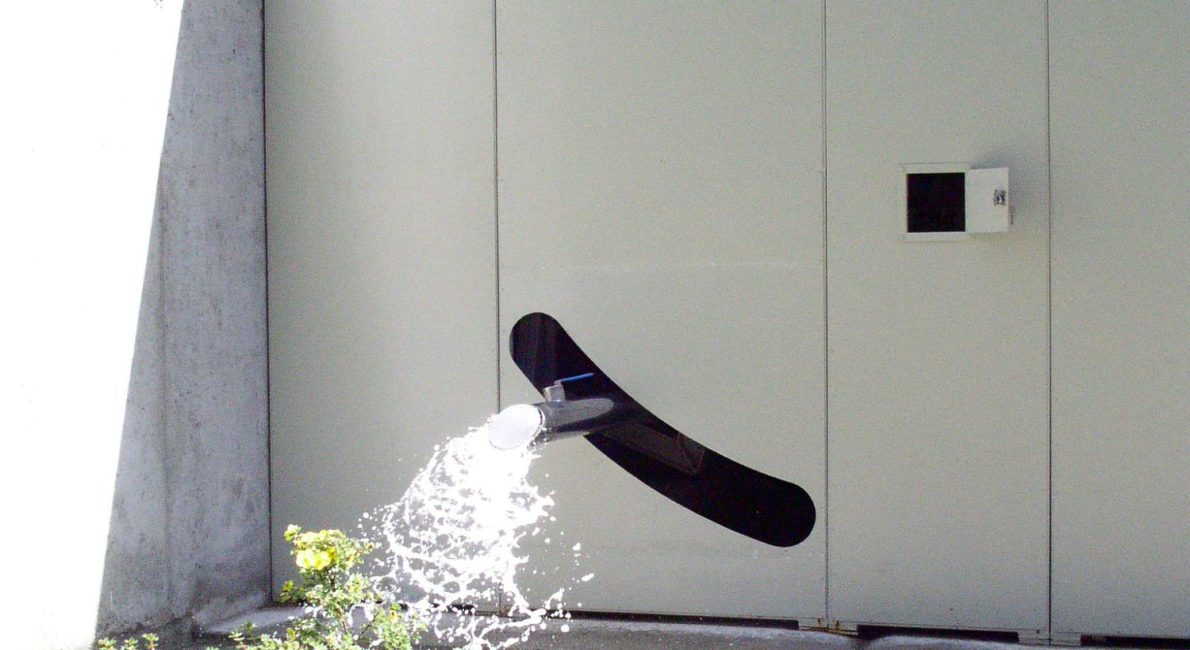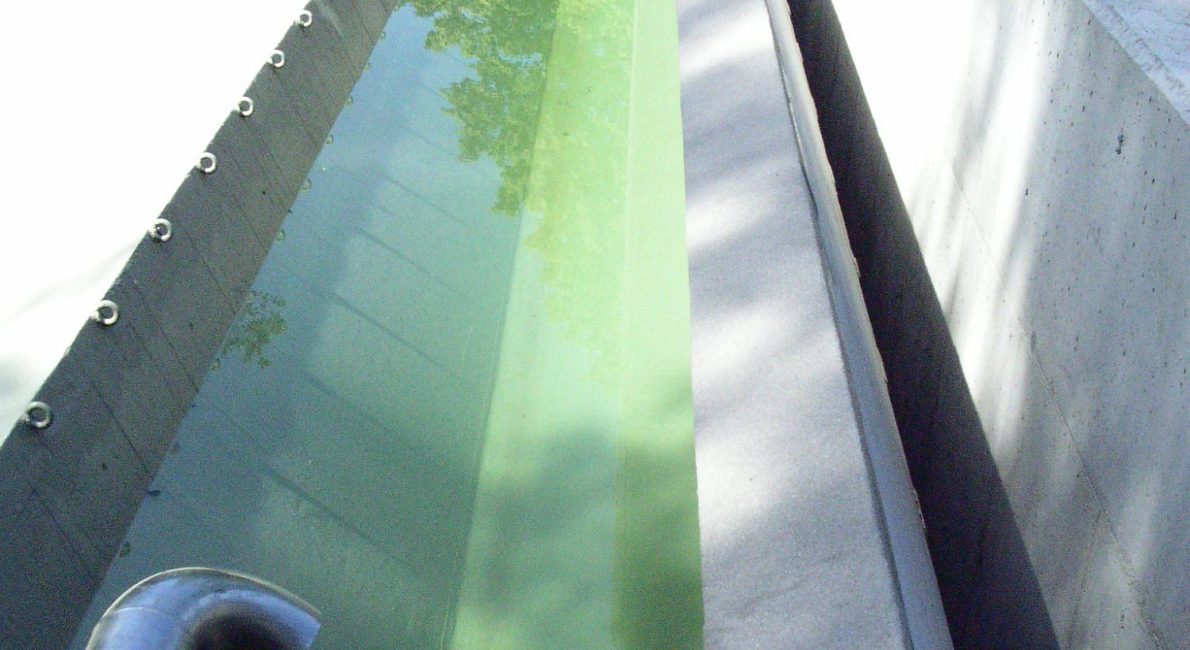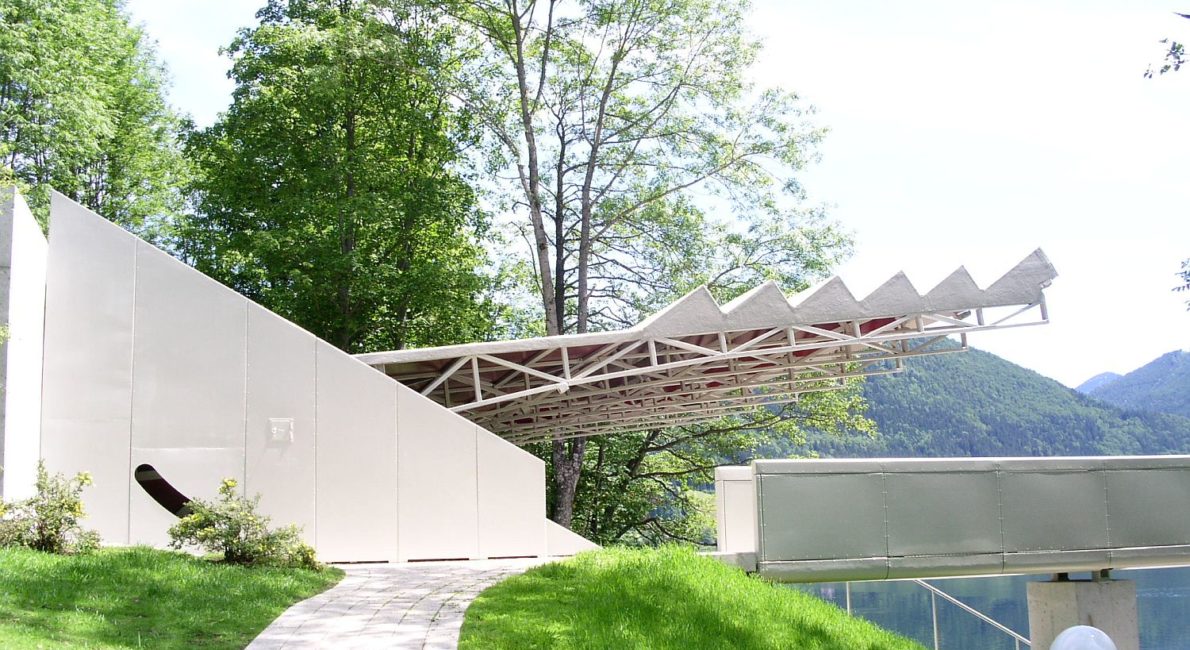Lake stage Lunz
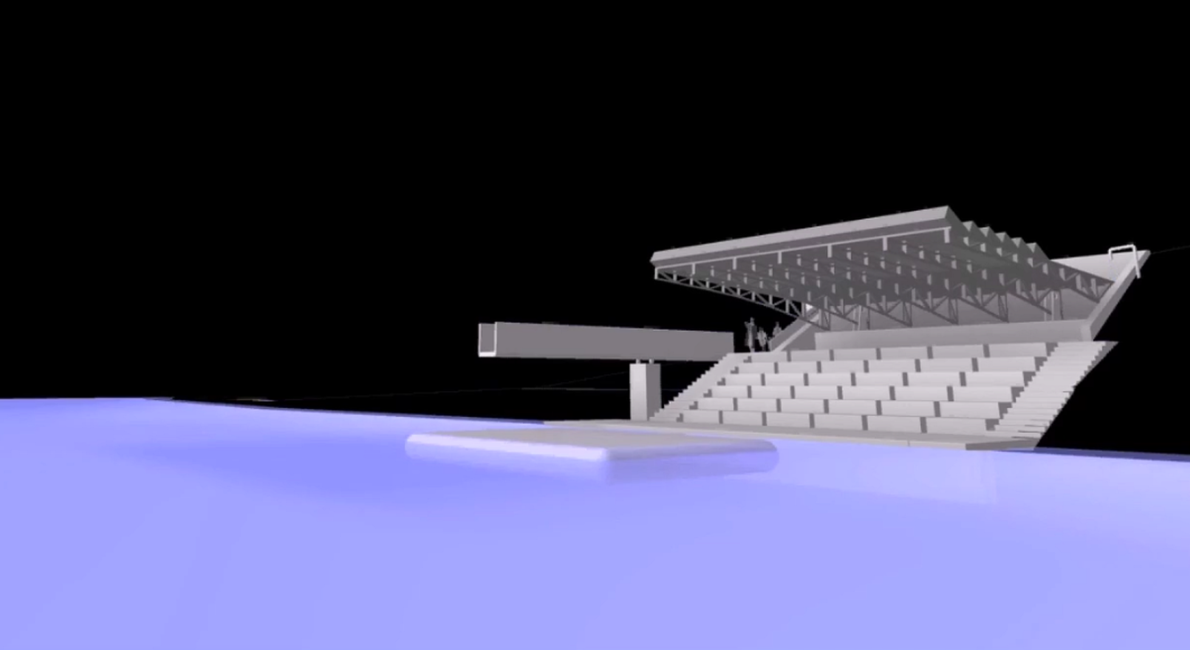
Read our privacy policy
-
Location
Lunz am See, Austria
-
Architect
Werkraum Ingenieure
-
Client
Community Lunz
-
Typologies
- Arts
- Special construction
-
Awards
- 2005 Austrian construction prize
- 2004 NÖ Maecenas
-
Competition
2003
-
Planning
2003 - 2004
-
Execution
2003 - 2005
-
Scopes
- LPH1 Basic analysis construction planning
- LPH2 Preliminary draft
- LPH3 Preliminary structural draft
- LPH4 Submission planning
- LPH5 Execution planning
- LPH6 Collaboration in tender procedures
- LPH7 Support of the construction work
- LPH8 Collaboration in the local construction supervison
- LPH9 Object support-LM.TW
-
Materials
- Concrete
- Steel & metal
-
Artist
Hans Kupelwieser
The floating stage Lunz was designed by Hans Kupelwieser for an artistic competition, the “Summer Games Lunz” and for the market town as a multifunctional work of art which supports through its mobility of its parts different uses: During the day closed, the roof serves as a sun lounger; the floating platform can be used as a floating island to rest and play, the plank serves as a diving platform into the lake. For events, the roof is opened and serves as a waterproof shell and acoustic canopy for the underlying virtually congruent concrete stands. The floating stage is the performance space; the plank complements the ensemble. The opening of 13x13m large roof takes place through seawater. On slope side end of the roof, a water tank is provided which is filled by pumping until the weight of the water backpack opens the roof. A valve is opened simply to close the roof. The water shoots into a catch basin and is finally on the plank – now a gargoyle – returned to the lake. The stage itself of course must also be mobile. Because the lake freezes over in winter and pulling the 8x5m big stage would be too expensive would, it is decoupled from the shore, dragged and flooded to a shallow place in the lake, (therefore under the winter ice) so that it can ‘hibernate’ on the lake bottom in about 3m depth. As a visible sign of the anticipation of warmer days.
Pictures: © Bruno Klomfar, Werkraum

